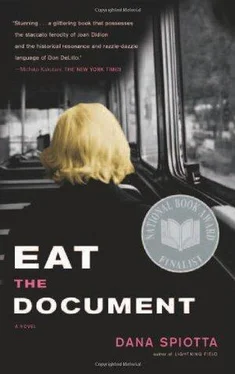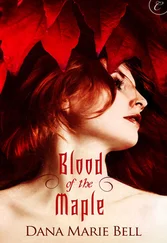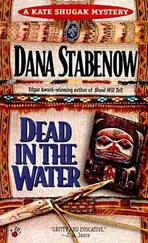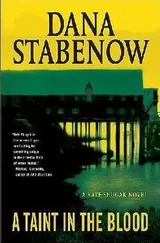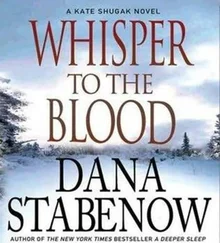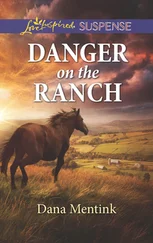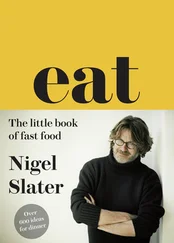Dana Spiotta - Eat the Document
Здесь есть возможность читать онлайн «Dana Spiotta - Eat the Document» весь текст электронной книги совершенно бесплатно (целиком полную версию без сокращений). В некоторых случаях можно слушать аудио, скачать через торрент в формате fb2 и присутствует краткое содержание. Год выпуска: 2006, Издательство: Scribner, Жанр: Современная проза, на английском языке. Описание произведения, (предисловие) а так же отзывы посетителей доступны на портале библиотеки ЛибКат.
- Название:Eat the Document
- Автор:
- Издательство:Scribner
- Жанр:
- Год:2006
- ISBN:нет данных
- Рейтинг книги:3 / 5. Голосов: 1
-
Избранное:Добавить в избранное
- Отзывы:
-
Ваша оценка:
- 60
- 1
- 2
- 3
- 4
- 5
Eat the Document: краткое содержание, описание и аннотация
Предлагаем к чтению аннотацию, описание, краткое содержание или предисловие (зависит от того, что написал сам автор книги «Eat the Document»). Если вы не нашли необходимую информацию о книге — напишите в комментариях, мы постараемся отыскать её.
shifts between the underground movement of the 1970s and the echoes and consequences of that movement in the 1990s. A National Book Award finalist,
is a riveting portrait of two eras and one of the most provocative and compelling novels of recent years.
Eat the Document — читать онлайн бесплатно полную книгу (весь текст) целиком
Ниже представлен текст книги, разбитый по страницам. Система сохранения места последней прочитанной страницы, позволяет с удобством читать онлайн бесплатно книгу «Eat the Document», без необходимости каждый раз заново искать на чём Вы остановились. Поставьте закладку, и сможете в любой момент перейти на страницу, на которой закончили чтение.
Интервал:
Закладка:
Safe as Milk
MIRANDA’S LIFE changed over the course of the summer. After years of static inertia throughout high school, everything at last came alive, fluctuated, became constantly inconstant. Miranda often tried to trace the whys and hows and ways of it: the way she met first Nash; then how she met Josh; how it could all be traced back to the Black House, to her friend Sissy; and also, or maybe particularly, to the long days of the Northwestern summer, when not only did the sun shine every day but it would stay light until nearly ten o’clock at night — ten o’clock — and it would feel as though the city spun extra hours just for serendipity, or even destiny, depending on how she looked at it.
That summer held a particular glow because it was the first time she left her mother’s house in the suburbs to live on her own in the city. It began when one of those things occurred that she thought only happened to other, more interesting people. She made a connection, walked into a score of a connection: a friend offered an available room in a house on Capitol Hill, the alternative, funky-even-for-this-funky-town neighborhood. And not just a room in any house but in the Black House. Miranda met her while she browsed in Shrink Wrap, a used-music store specializing in vinyl LPs.
Shrink Wrap was unbelievably located in a suburban colossus called the Bellevue Mall: a formerly upscale, ’80s mall-boom monstrosity with sponge-painted pink-and-gray cement pillars, now exclusively occupied by second-string retail stores. All of Miranda’s life she had watched the decline and tawdry aging of something designed to be extra new and perpetually now. Like the rapidly aging housing developments that surrounded it, the best Bellevue Mall ever looked was the day it was built. Time could add nothing to it. But here, somehow, in this now lower-rent environment sat Shrink Wrap, the sister store of a relentlessly obscure vinyl-and-CD store in the University District. Because of its remote location in the suburbs, Shrink Wrap developed a reputation for unpicked-through merchandise and became a magnet for hard-core obsessives and music geeks. In addition to their vast stockpile of vinyl, they also sold old cassette tapes, which were becoming trendy among adolescent boys again despite their inferior technology. Gradually that became the theme, the hook, of the place: outdated technology for young kids who already saw the vanguard in the past, the recent past, and not just in content but in format. Miranda liked that; she found it vaguely subversive, and besides it was the only place of interest in the whole suburb.
Her big break happened, or began, as she flipped through the LP bins one afternoon. LPs lent themselves to browsing. Unlike a CD’s, their substantial covers could be examined. Unknown music could catch your eye and force you to take a closer look. She picked up an old Captain Beefheart record, Safe as Milk . She thought she might buy it because she liked the title. They should name the record store Safe as Milk. They could name the whole suburb Safe as Milk. She always did that, thought of new names for things. If you discover the appropriate name, not only does the named thing change but your relationship to the named thing changes. It becomes within your grasp. While she held this LP, she thought, This is a Long-Playing record, which people play on high-fidelity stereo systems. She could see the outline of the record itself through the shiny cardboard sleeve. As she regarded it — it had weight — a girl with emphatically girlish Heidi braids approached her.
She had short, blunt bangs, cut well above her highly plucked brows, and two jet-black braids wound tight starting behind each ear, each with bright green yarn braided in and tied with knotted bows at the ends. And not the skinny yarn that you would use for knitting but that thick, fat yarn Miranda had only ever seen in kindergarten, yarn so fat kids with fat fingers were able to tie it. The girl’s braids evoked in Miranda a rush of disconcerting nostalgia: she thought of glitter in clumps, ashy blue construction paper and abstract dreamscapes of tissue paper, confetti and pasta shells. Miranda held her own long hair in one hand, pulling it straight, staring at the girl, who was now speed-talking (sniffling, jaw grinding, practically spark shooting). Miranda’s breath quickened, and she felt a general ache that made her want something from or with this girl.
She wanted to show Miranda a clip on her laptop computer. She had ripped the entire Captain Beefheart box set, obtained somehow at no expense, including a digital video encoded on one of the CDs. She opened the computer on the front counter, and they watched a tiny Captain Beefheart shimmy and jam his way through a song on a French beach in 1967, with his Magic Band, zany freaks with a tight monster-blues sound, but blues with a fractured acid filter. The girl introduced herself as Sissy Cakes. She quickly told Miranda how she had just broken up with her much older girlfriend, and she had been on a three-day binge of partying and all-nighters ever since, so don’t worry if she seemed to be hypered out. Miranda had heard of her, or read about her somewhere. Sissy described how she belonged to a performance/test group that had attempted and failed to shut down the Bumbershoot arts festival at the Space Needle each of the past three years. “They totally ghetto any local, noncorporate artists.” She also wrote a music column for a local free paper. She explained how she made no money, but it was okay because she lived very cheaply in an old Victorian house off Fifteenth Avenue in Capitol Hill. And then she said it, there was a room opening up — maybe Miranda wanted it.
Sissy’s house was known around town as the Black House. This was for two reasons: it was, in fact, painted black, and it also housed various black blockers, or want-to-be black blockers, kids from depressed rural backwaters and nearby college towns who came up for shows or political tests and demonstrations, and they were free to crash wherever space was available. The Black House was a squat but a benign quasi-squat. It was condemned but still standing. The people who lived there paid rent to the guy who owned it, but just enough not to get in trouble for trespassing. One day he would tear it down, but meanwhile he collected money on the sly and didn’t do anything to keep it up. It had running water and electricity but no heat. The large L-shaped wraparound porch was still in pretty good shape, despite the kids forever perched on its rails and balusters. The house had a secret feel — it was set back from the road and hidden from view by large red maples growing in a row across the front yard. This kept the sun off the walkway to the house but also created an odd canopy of drizzle-edged dryness in all but the most dramatic downpours.
The asymmetrical entryway led to two connected parlors on the right and a stairway with a wobbly, oft-ridden-and-climbed banister to the left. One parlor was used as a bedroom; the other, with pretty triptych bay windows, was used as the common room. Which meant it was always covered with sleeping bags of crashers and visiting friends. There was one lone couch: a formal-looking Empire-style thrift store find. The upholstery was ripped and the wood scratched by the three cats that lived in the house. And although there was a makeshift coverall on it composed of an Army blanket further covered by a batik red-and-white throw (which could well have been someone’s abandoned sarong left after a party and made part of the decor by happenstance), Sissy quickly warned Miranda that she would get fleas from reclining on it. “That is if you are the type of person fleas like.”
Miranda moved there in mid-May, bringing only two suitcases of clothes and a cheap boom box. Her room was on the second floor, toward the back. It actually had a little anteroom attached to it, and someone had hung black beads in the threshold between the two rooms. With candles lit and her futon on the floor, it was practically paradise. Her main room even had its own dormer window, with black shutters that were permanently nailed open. It looked out over a side alley and beyond that Fifteenth Avenue. She could see a streetlight through tree branches outside the window, hear people talking as they walked by at all hours of the night, and she couldn’t quite believe she lived in such an exciting place. Her first night she could barely sleep thinking about the whole city around her and actually residing right in the middle of it all.
Читать дальшеИнтервал:
Закладка:
Похожие книги на «Eat the Document»
Представляем Вашему вниманию похожие книги на «Eat the Document» списком для выбора. Мы отобрали схожую по названию и смыслу литературу в надежде предоставить читателям больше вариантов отыскать новые, интересные, ещё непрочитанные произведения.
Обсуждение, отзывы о книге «Eat the Document» и просто собственные мнения читателей. Оставьте ваши комментарии, напишите, что Вы думаете о произведении, его смысле или главных героях. Укажите что конкретно понравилось, а что нет, и почему Вы так считаете.
